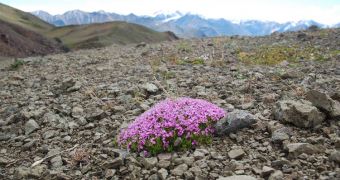Scientists have recently determined that not only species of animals and plants are affected by global warming and climate change, but also populations. This could lead to a new approach of understanding the effects that increased global temperatures will have over time.
One of the main conclusions of all computer models looking at how Earth will get warmer indicate that species are expected to change their natural habitats and geographical ranges.
Animals and plants living at the Equator will move to the north or south, towards mid-latitudes, whereas those who cannot leave a specific area will be confined to higher elevations.
Past investigations have shown that some species stay put regardless of the amount of warming they are experiencing. This makes it a lot more difficult for planetary scientists to model how the world will look like decades or centuries from now.
In a new scientific investigation, researchers showed why we should expect too see sudden shifts in species population as the world is getting warmer. The work also shows why species shift their geographic ranges to avoid high temperatures.
The work was published in the latest issue of the top journal Nature, by ecologist Daniel Doak, from the University of Wyoming and William Morris, who is based at the Duke University.
“This study illustrates the critical need for long-term research to address our most pressing ecological challenges,” explains the program director of the US National Science Foundation (NSF) Division of Environmental Biology, Saran Twombly.
“Without the temporal and spatial scales employed here, we have little hope of understanding the complex ways in which organisms will respond to climate change,” the expert adds.
The research team analyzed plants and animals from Alaska and New Mexico, and conducted the research over many years. The two experts also conducted research in areas that experienced the effects of global warming full-on.
Their work reveals that the pattern of responses thousands of species give to climate change is a lot more complex than they thought before beginning the 6-year study.
For example, plants at the southern edge of the study range tended to die more often due to increased heat, but spawned in larger numbers than usual.
“In most years, these effects are balanced by plants in the south growing more rapidly, so that populations there are no less stable than those in the north,” Doak reveals.
“Up to a point, we may see little effect of warming for many organisms. But past a climatic tipping point, the balance of opposing effects of warming will likely cease, leading to subsequent rapid declines in populations,” the expert adds.
“We shouldn't interpret a lack of ecological response to past warming to mean that little or no effects are likely in the future,” Doak cautions.

 14 DAY TRIAL //
14 DAY TRIAL //